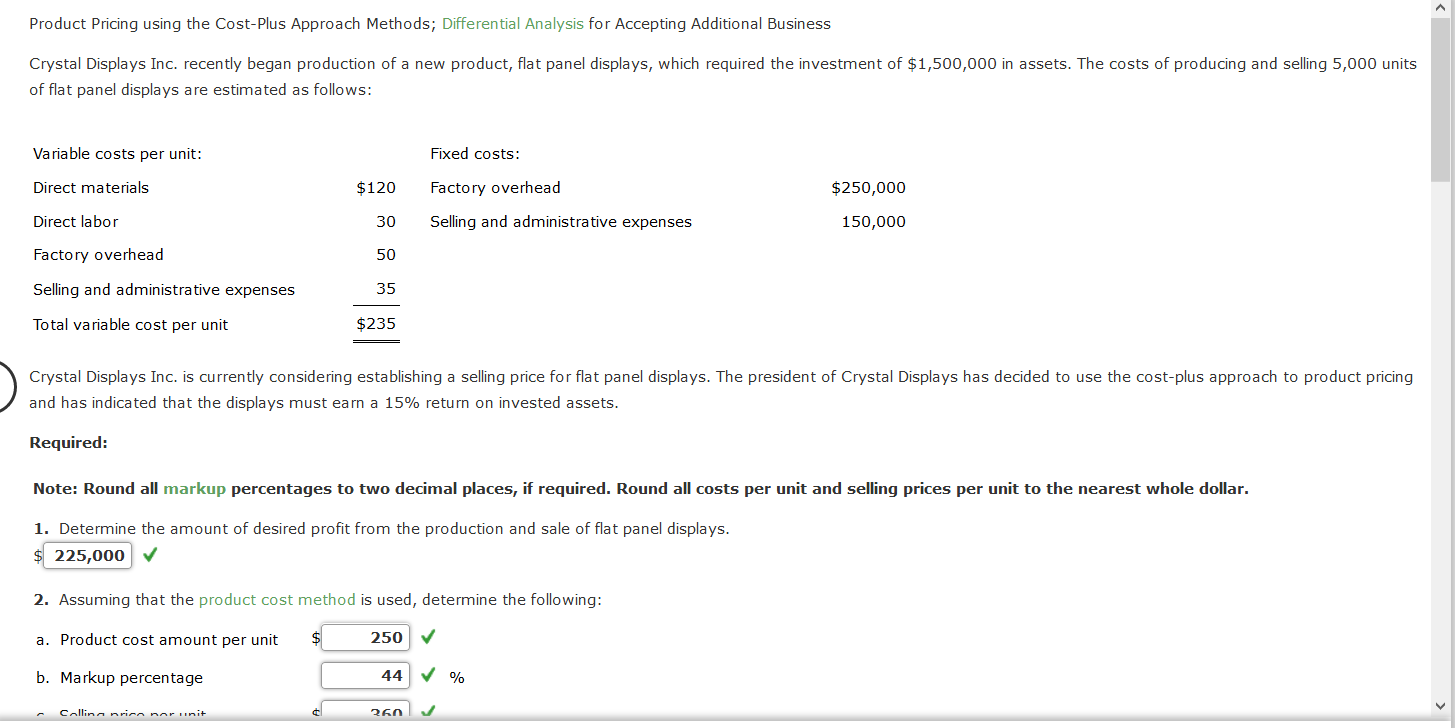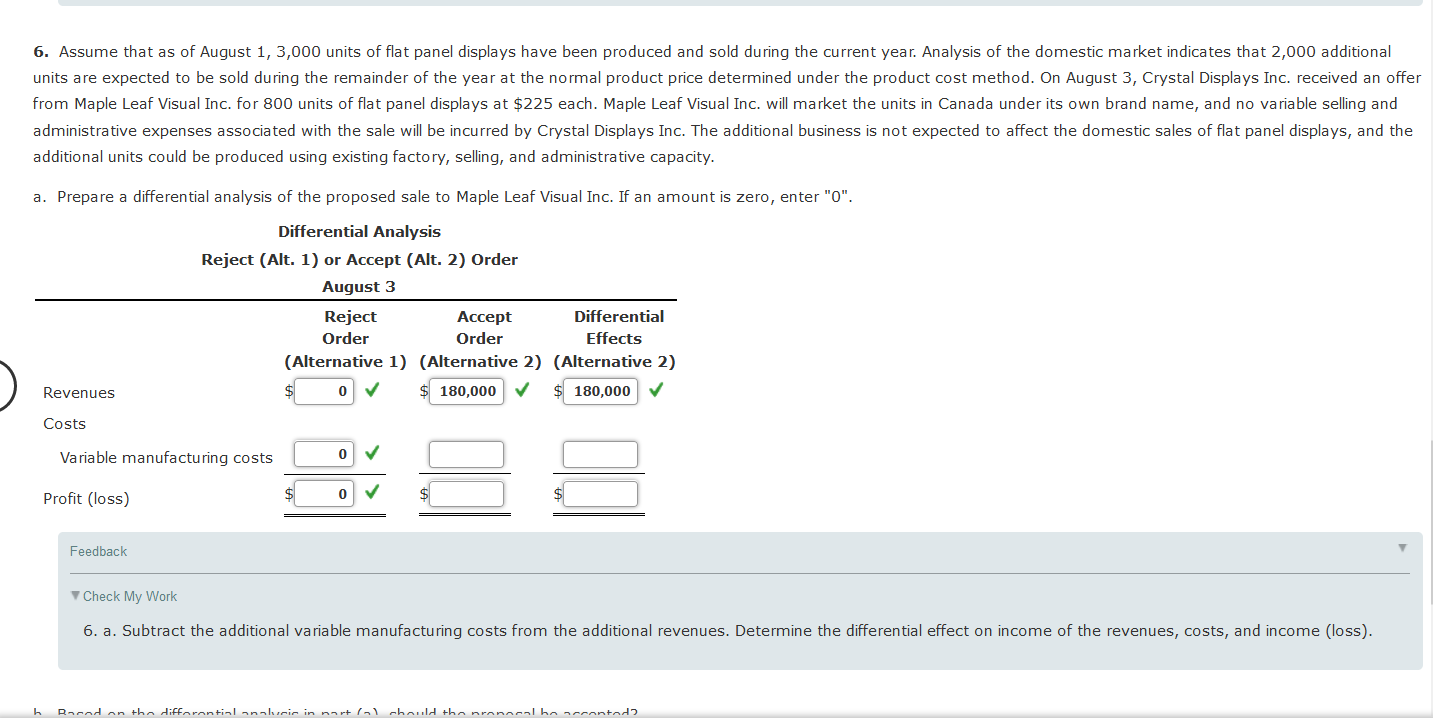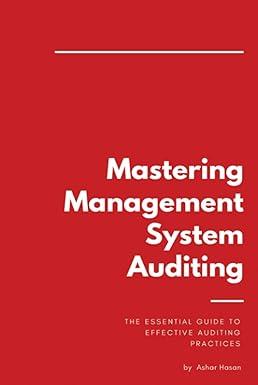I AM STUCK ON PART 6. 


> Product Pricing using the Cost-Plus Approach Methods; Differential Analysis for Accepting Additional Business Crystal Displays Inc. recently began production of a new product, flat panel displays, which required the investment of $1,500,000 in assets. The costs of producing and selling 5,000 units of flat panel displays are estimated as follows: Variable costs per unit: Fixed costs: Direct materials $120 Factory overhead $250,000 Direct labor 30 Selling and administrative expenses 150,000 Factory overhead 50 Selling and administrative expenses 35 Total variable cost per unit $235 Crystal Displays Inc. is currently considering establishing a selling price for flat panel displays. The president of Crystal Displays has decided to use the cost-plus approach to product pricing and has indicated that the displays must earn a 15% return on invested assets. Required: Note: Round all markup percentages to two decimal places, if required. Round all costs per unit and selling prices per unit to the nearest whole dollar. 1. Determine the amount of desired profit from the production and sale of flat panel displays. $ 225,000 2. Assuming that the product cost method is used, determine the following: a. Product cost amount per unit $ 250 b. Markup percentage 44 % Callin nrica nariinit 260 Required: Note: Round all markup percentages to two decimal places, if required. Round all costs per unit and selling prices per unit to the nearest whole dollar. 1. Determine the amount of desired profit from the production and sale of flat panel displays. $225,000 2. Assuming that the product cost method is used, determine the following: a. Product cost amount per unit $ 250 b. Markup percentage 44 % C. Selling price per unit 360 3. (Appendix) Assuming that the total cost method is used, determine the following: a. Total cost amount per unit 315 b. Markup percentage 14.29 % C. Selling price per unit 360 4. (Appendix) Assuming that the variable cost method is used, determine the following: a. Variable cost amount per unit $ 235 b. Markup percentage 53.19 % C. Selling price per unit $ 360 5. The cost-plus approach price computed above should be viewed as a general guideline for establishing long-run normal prices; however, other considerations, such as the price of competing products and general economic conditions of the marketplace could lead management to establish a different short-run price. 6. Assume that as of August 1, 3,000 units of flat panel displays have been produced and sold during the current year. Analysis of the domestic market indicates that 2,000 additional units are expected to be sold during the remainder of the year at the normal product price determined under the product cost method. On August 3, Crystal Displays Inc. received an offer from Maple Leaf Visual Inc. for 800 units of flat panel displays at $225 each. Maple Leaf Visual Inc. will market the units in Canada under its own brand name, and no variable selling and administrative expenses associated with the sale will be incurred by Crystal Displays Inc. The additional business is not expected to affect the domestic sales of flat panel displays, and the additional units could be produced using existing factory, selling, and administrative capacity. a. Prepare a differential analysis of the proposed sale to Maple Leaf Visual Inc. If an amount is zero, enter "0". Differential Analysis Reject (Alt. 1) or Accept (Alt. 2) Order August 3 Reject Accept Differential Order Order Effects (Alternative 1) (Alternative 2) (Alternative 2) Revenues 180,000 180,000 Costs Variable manufacturing costs 0 Profit (loss) 0 Feedback Check My Work 6. a. Subtract the additional variable manufacturing costs from the additional revenues. Determine the differential effect on income of the revenues, costs, and income (loss). Bocodon the differentialanokci in nart 11 hould the nrannalhanccontado









